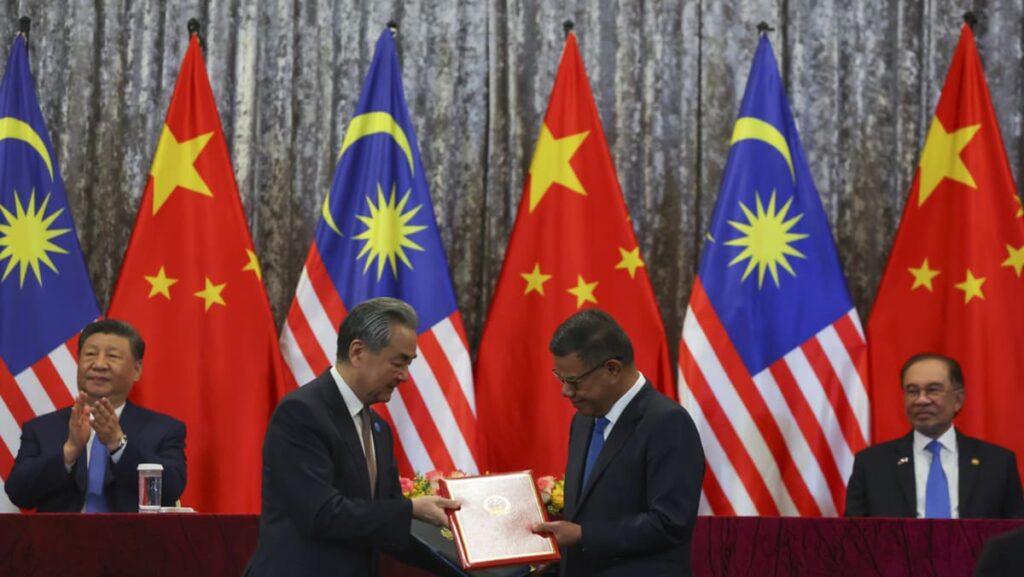“As of April, this year alone we recorded nearly 900,000 tourist arrivals from China. Last year, the total stood at four million,” he said, as quoted by NST.
This is seen as a positive indicator for the government to continue such initiatives for the benefit of both countries, he said.
“China remains the top source of international tourists to Malaysia, followed by India. Among ASEAN countries, Singapore leads, followed by Thailand,” he added, referring to the Association of Southeast Asian Nations.
“Tourism continues to be a key contributor to the national economy, given its immediate impact compared to other forms of investment,” Saifuddin said.
Before the extension was announced, Malaysians could travel to China visa-free until only Dec 31 this year, while Chinese nationals could enjoy visa-free travel to Malaysia until Dec 31 next year, according to The Star.
Malaysian Association of Tour and Travel Agents president Nigel Wong said that the visa extension will allow the tourism industry to better develop the Chinese inbound market.
“There is stability for the industry to plan ahead and boost efforts to attract more Chinese tourists,” he was quoted as saying by The Star, highlighting the increasing demand for Chinese travellers looking for experiential tourism products.
“It’s no longer just about the conventional tours. Instead, innovative and creative experiences like culinary tourism, heritage and culture, as well as ecotourism products, are popular with foreign tourists,” Nigel added.
He also expects the benefits of the visa extension to go beyond the Visit Malaysia 2026 campaign.
“Tourism tends to spike after the Visit Malaysia campaign and this move will tie in very nicely,” he said.
The Visit Malaysia 2026 campaign is a national drive to boost incoming tourism, with a series of bold targets, including 35.6 million international arrivals and RM147.1 billion (US$33 billion) in tourism receipts.
President of the Malaysian Inbound Tourism Association Mint Leong said the visa-free extension will give industry players a clear direction when promoting Malaysia to Chinese tourists.
“Malaysia will also have the opportunity to attract more business events and business travellers due to this,” Leong was quoted as saying by The Star.
Meanwhile, treasurer-general of the Associated Chinese Chambers of Commerce and Industry Koong Lin Loong said the move can further spur the national gross domestic product, as the “hospitality industry is also set to benefit”.
“Chinese tourists will feel that there is less hassle due to the visa-free conditions and when they arrive, they will definitely be spending on goods as well as food and beverage,” he said.
While Chinese tourist arrivals to Malaysia continue to increase, the Bangkok Post reported a decline in arrivals to Thailand, hitting a low for 2025 with only 5,833 visitors recorded on Apr 16, below the usual daily average of 15,000 to 20,000.
Natthriya Thaweevong, Chairperson of the Tourism Authority of Thailand said that the average number of tourists from Asia visiting Thailand has dropped, likely due to “safety concerns” and the “economic impact from the US tariff hike.”
The safety concerns likely refer to the high-profile kidnapping of Chinese actor Wang Xing in Thailand.
As of Apr 20, the total number of Chinese arrivals this year was 1.5 million, followed by Malaysians at 1.4 million and Russians at 835,385, according to the Ministry of Tourism and Sports.
Last year, then-prime minister of Thailand Srettha Thavisin announced that Chinese nationals will be granted visa-free entry on a permanent basis starting Mar 1, 2024.
Last January, Singapore and China also agreed to a 30-day mutual visa-free entry for their citizens, close to two months after the proposal was first announced.
Read the full article here

